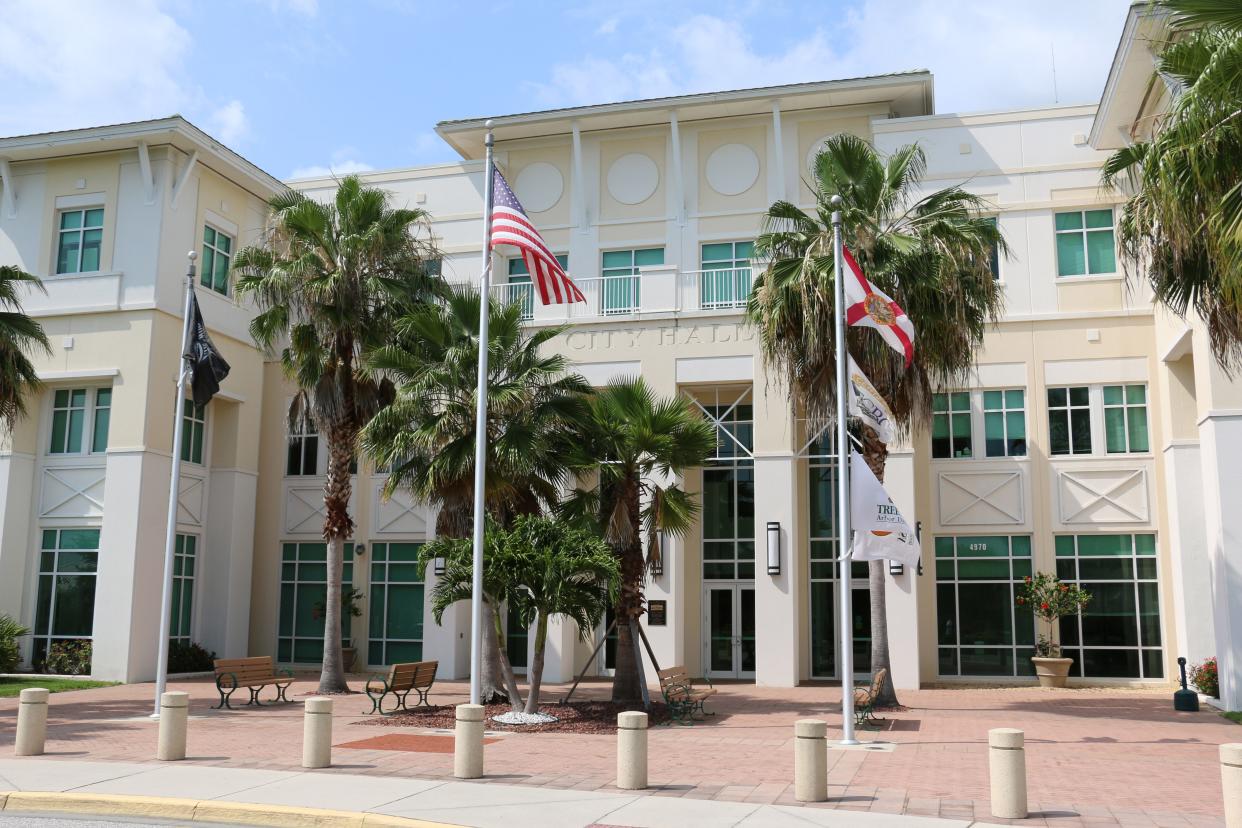FEMA can finally place mobile homes on single-family lots in North Port

NORTH PORT – North Port city commissioners approved an ordinance Tuesday that allows FEMA to temporarily place larger mobile homes on single-family lots to help families impacted by Hurricane Ian, despite worries that they'll face problems later removing the structures after the allowance expires.
The ordinance, passed on a 4-1 vote with Commissioner Pete Emrich dissenting, declared a housing emergency, back-dated to last Sept. 23 to coincide with the state of emergency declared by Gov. Ron DeSantis in anticipation of Hurricane Ian’s landfall Sept. 28 on Cayo Costa in Lee County.
That housing emergency allows the Federal Emergency Management Agency to provide direct temporary housing assistance for up to 18 months from Sept. 29, 2022 – the date of the federal disaster declaration – to March 28, 2024.
Related For Subscribers: North Port ignores pleas from FEMA to allow temporary mobile home
People living in the temporary housing can petition for extensions in six-month increments, which, in theory, could allow displaced people to reside in FEMA-provided homes for a total of 36 months.
After the storm, city officials extended a limit on how long a travel-trailer could be parked at a single-family home but balked at declaring the housing emergency because of concerns about allowing FEMA and private entities to place larger mobile homes on the typical 80-foot-by-120-foot lots that General Development Corp. created when designing the city in the 1950s.
Before Tuesday, the chief reason stated by commissioners opposing larger mobile homes on single-family lots had been that, while the federal government would remove them, private entities would not and the city would have to resort to code enforcement efforts to have them removed.
Emrich, who held steadfast in his opposition, cited other concerns, such as the possibility that the homes would block emergency service response to neighbors and possibly encroach on adjacent property.
He reiterated that larger mobile homes could work in subdivisions with large lots but stressed that in “some of these communities around here it doesn’t work.”
“It’s not a universal fix in this city,” he added.
City staff explored several options, including suggesting that Holiday Park – a 55-and-older manufactured home community severely damaged by Ian – could provide an all-ages solution for temporary housing, but that, too, proved impractical.
“I know staff looked at every option possible and never really stopped,” Commissioner Phil Stokes said. “It seems like we need to do this and deal with the unintended consequences down the road, but we need to take care of these people.”
What’s now allowed
Under the emergency declaration FEMA can place two- or three-bedroom units on lots where the owner’s home has been substantially damaged.
The placement must still meet all city codes.
Neighborhood Development Services Director Alaina Ray said that the mobile homes would not be hooked to septic fields that may be located in the front yard, but “if there’s room on the sides this resolution would allow them to encroach into side setbacks.”
“Most lots you would have to take out some trees to make an accommodation,” Ray added.
City Attorney Amber Slayton stressed that the potential locations are already outlined in the city code.
FEMA had requested allowance
At the April 25 commission meeting, FEMA officials asked commissioners to allow it to place larger mobile homes in the city to accommodate at least three households.
The next day, after the commission made no move to do so, the head of one of those households, attorney Jeffrey Rapkin, filed a petition in the 12th Judicial Circuit Court asking Judge Danielle Brewer to compel the city to allow FEMA to do its job.
Brewer issued a show cause order on May 8, directing the city to do that or show cause why it could not.
Rapkin, his wife Virginia and their 27-year-old autistic daughter, had since been provided a rental apartment by FEMA after his petition to the court, but they still wanted to live in a mobile home next to their house on Libby Road. The Rapkins have a double lot, so encroachment was never an issue.
Commissioner Debbie McDowell, who had several email exchanges with Virginia Rapkin, reminded her fellow board members that Senate Bill 250 – a hurricane response bill awaiting the signature of Gov. DeSantis – would allow for the placement of larger mobile homes anyway.
The bill allows one temporary shelter to be placed on a single-family lot for up to 36 months or until a certificate of occupancy is issued for the permanent home.
This article originally appeared on Sarasota Herald-Tribune: FEMA can place mobile homes in North Port after city passes ordinance

